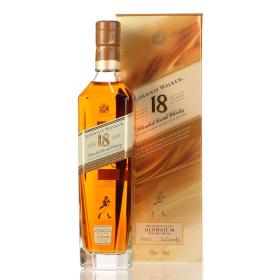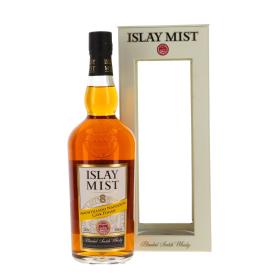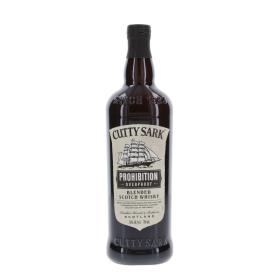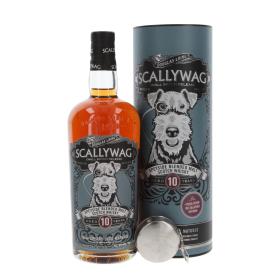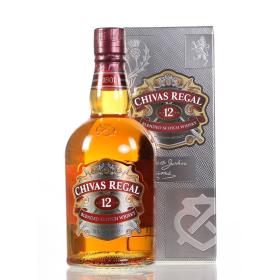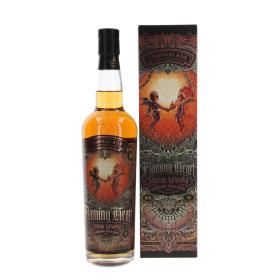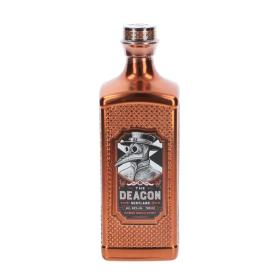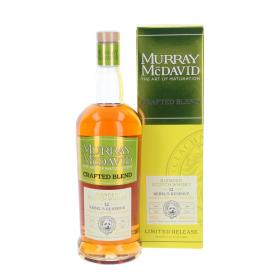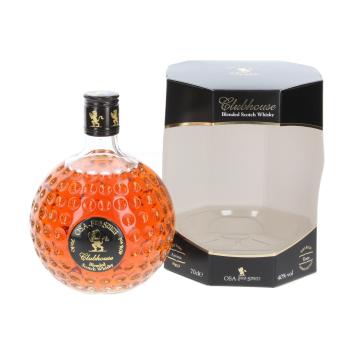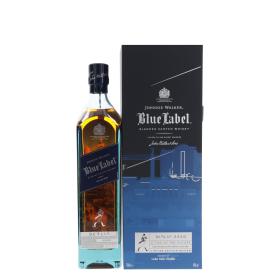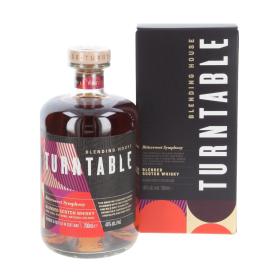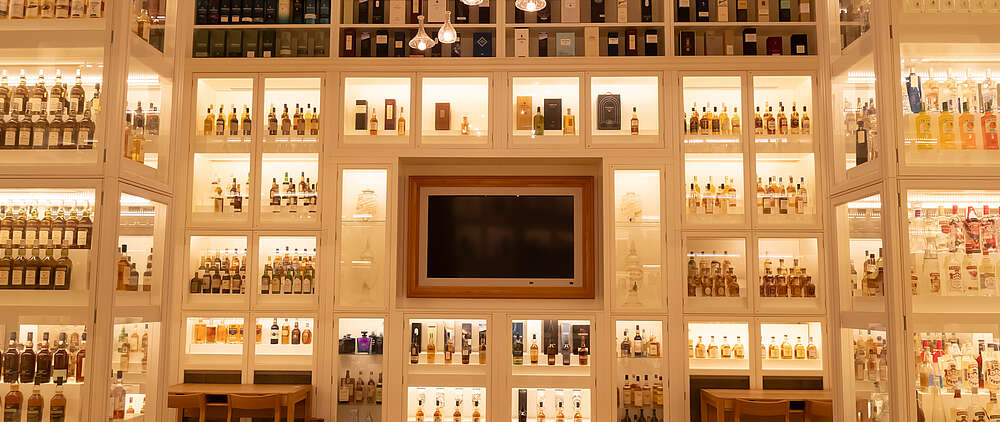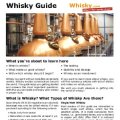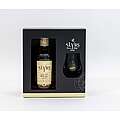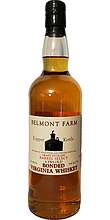Blended Whisky
The triumph of Scotch whisky was only made possible by the inexpensive industrial production of alcohol from unmalted grain. The honour belongs to Robert Stein, who invented the patent still in 1826. This apparatus, also known as a continuous still, allows unmalted grain to be distilled continuously.
The great advantage is obvious. The patent still can be operated around the clock without having to be cleaned between batches, as is the case with pot stills for single malt whisky. The lengthy and expensive process of malting, which takes several days together with the soaking of the barley, is also no longer necessary. Whisky from the patent still is called grain whisky after its main ingredient, the grain.
Before grain whisky, there was only malt whisky and this was virtually unknown outside Scotland. Aeneas Coffey improved this distillation process in the following years, which led to the patent still being nicknamed the Coffey Still.
The huge success of blended whisky pitted the distillery owners of the two distillation processes (pot still and Coffey still) against each other. In 1909, a royal commission settled the dispute between the companies, allowing alcohol made from unmalted grain to bear the name whisky.
Among the first blenders were Andrew Usher and William Sanderson, who blended inexpensive grain whisky with malt whisky to create the first blended whisky. The first brands included the names that are still recognised today: Black & White, Dewar's, Haig, Vat 69 and White Horse.
The special thing about blended Scotch whisky is the marriage of smooth grain whisky with intense malt whisky. It is the grain whisky that makes the malt whisky bearable for the unusual tongue. Blended whisky is the Scotsman's concession to the taste of the masses.
The English word grain stands for cereal. Basically, it doesn't matter which grain is used for grain whisky, as all that matters is the starch present in each grain. A little barley is always involved, as only the enzymes in barley can convert starch into sugar. The main ingredient in grain whisky used to be maize, which nobody in Scotland liked to admit. Today, the favoured grain is wheat, as it is slightly cheaper than maize. Maize is bought on the world market. The largest producer of corn is the USA. Kentucky Straight Bourbon consists of more than 51% corn. When the Scotchman talks about unmalted grain in the blend, he likes to mention only the unmalted barley, as this places him further away from bourbon made from corn and closer to malt whisky made from pure barley.
The alcohol from unmalted grain is produced with a higher alcohol content than in pot stills and contains fewer esters, which are responsible for the flavour of the whisky. Grain whisky therefore tastes more neutral. However, neutral alcohol made from potatoes or molasses is taboo. British legislation only permits grain alcohols that have been stored in barrels for a minimum of 3 years if the finished product is to bear the name whisky. The age of the grain whisky counts towards the age of the blend. The grain whisky in a blend with an age of 12 years has therefore also undergone a minimum storage period of 12 years in oak casks.
Malt whisky is still made by hand, whereas grain whisky is produced on an industrial scale. For every 85 or so malt distilleries in production (as of 1999), there are around half a dozen large grain distilleries. Anyone who has ever seen the Ballantine's warehouses in Dumbarton or the Chivas warehouses can imagine the output of these distilleries. In 1995, 14 blended Scotch whiskies alone were among the 100 best-selling spirits in the world.
The grain distilleries
- Caledonian - (partially demolished)
- Cambus - United Distillers
- Cameron Bridge - United Distillers
- Carsebridge - United Distillers
- Dumbarton - Allied Domecq
- Girvan - Wm Grant & Sons
- Invergordon - Whyte & Mackay - Fortune Brands
- Inver House
- North British - IDV/Robertson & Baxter
- Port Dundas - United Distillers
- Strathclyde - Allied Distillers
- Tomatin - Takara Shuzo Co and Okura & Co Ltd, Japan
- William Lawson - Bacardi & Company Limited
90% of malt production goes into the production of blends. If you now consider that this 90% of malt whisky only contributes 10 to 15% to blend production, you have a rough idea of how large the output of the few grain distilleries is.
The proportion of malt in blends ranges from a meagre 10% to around 15% (e.g. Johnnie Walker Red Label), 50% (Chivas Regal) and up to more than 80% (Bushmills 1608). The majority of blends probably contain between 10% and 15% malt. But not all malt is the same. You need intense malts to achieve a big effect with a small proportion. Lowland malts play an important role in blends: they are the link between grain and Highland or Islay malts.
The process of blending the individual malt whisky varieties with the main component of the blend, the grain whisky, requires the highest level of skill and experience from the master blender, who has more than 100 different malt whiskies at his disposal. Typically, however, the master blender only uses 30 to 40 different single malts, of which around ten are used in significant quantities. The other 20 to 30 varieties are used to refine and fine-tune the flavour. There are rare and usually extremely expensive blends that are put together from more than 100 different malts.
A blend is built up systematically. Firstly, the master blender selects around ten malt whiskies. These are the so-called lead whiskies. These whiskies determine the basic flavour of the blend. The malts typically come from the different regions of Scotland (Lowlands, Highlands, Islands). The malts from the Highlands (Speyside) provide the basic flavour and depth of the blend. The malts from the island of Islay provide the smoky flavour and the sherry cask and Lowland whiskies give the blend a soft, fruity note.
Each of these lead whiskies is accompanied by a comparable whisky so that there is always a replacement should one of the lead whiskies fail. The frequently sold blends are even accompanied by two to three replacement malts for the lead whiskies in order to increase the security of production.



